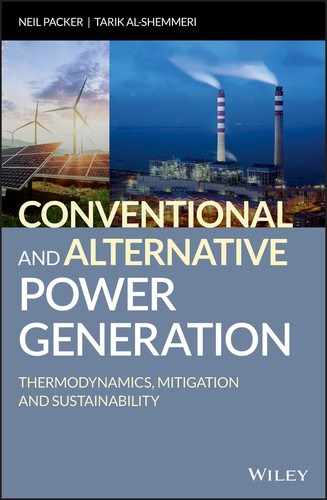Book Description
A much-needed, up-to-date guide on conventional and alternative power generation
This book goes beyond the traditional methods of power generation. It introduces the many recent innovations on the production of electricity and the way they play a major role in combating global warming and improving the efficiency of generation. It contains a strong analytical approach to underpin the theory of power plants—for those using conventional fuels, as well as those using renewable fuels—and looks at the problems from a unique environmental engineering perspective. The book also includes numerous worked examples and case studies to demonstrate the working principles of these systems.
Conventional and Alternative Power Generation: Thermodynamics, Mitigation and Sustainability is divided into 8 chapters that comprehensively cover: thermodynamic systems; vapor power cycles, gas power cycles, combustion; control of particulates; carbon capture and storage; air pollution dispersal; and renewable energy and power plants.
- Features an abundance of worked examples and tutorials
- Examines the problems of generating power from an environmental engineering perspective
- Includes all of the latest information, technology, theories, and principles on power generation
Conventional and Alternative Power Generation: Thermodynamics, Mitigation and Sustainability is an ideal text for courses on mechanical, chemical, and electrical engineering.
